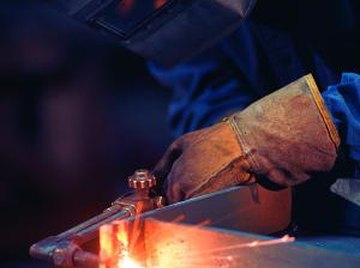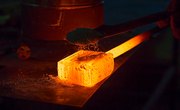
When heating steel it's important to understand how different temperatures affect the color and chemistry of the steel. Working with steel and modifying its color involves setting up a sufficient heat source, heating the steel to the desired color, then quenching and tempering it. At high temperatures, steel takes on colors ranging from dull red to bright yellow, while at low temperatures it changes into colors such as brown, purple, blue and grey.
The exact temperatures differ slightly depending on the specific type of steel being used.
High temperature fires and red hot metal are dangerous. If you are inexperienced, have a professional smith do this.
Prepare an appropriate heat source, such as a charcoal fire, a propane forge, a torch, high temperature salt bath or electric furnace. Ideally, the heat source will provide a uniform heat, be easily controlled and provide a non oxidizing environment.
Heat the steel to temperatures from 400 to 800 degrees Fahrenheit, to produce oxidation colors. At 480 degrees F., the steel turns brown, at 520 degrees, it turns purple, at 575 degrees, it turns blue and at 800 degrees, it turns grey. These temperatures are commonly used in tempering tool steel.
Heat the steel above 800 degrees to produce incandescent colors. From 1000 to 1500 degrees, the steel will turn an increasingly brighter shade of red. At the critical eutectoid temperature of 1335 degrees, the steel recrystallizes as austenite and eventually loses its magnetic charge. From 1600 to1900 degrees, the steel will turn orange and then yellow. At 2000 degrees, the steel will be bright yellow.
Remove your steel from the heat source and quench it vertically in oil. Once the steel is cool enough to handle, temper it as soon as possible.
Tips
Warnings
References
Tips
- The exact temperatures differ slightly depending on the specific type of steel being used.
Warnings
- High temperature fires and red hot metal are dangerous. If you are inexperienced, have a professional smith do this.
About the Author
Sean Mann has been a freelance writer since 2010. With thorough knowledge and experience in technological fields such as computer software, hardware, the internet and programming, he creates online content for various websites. Mann has a Bachelor of Science in computer science from Ohio State University.
Photo Credits
Jupiterimages/liquidlibrary/Getty Images
